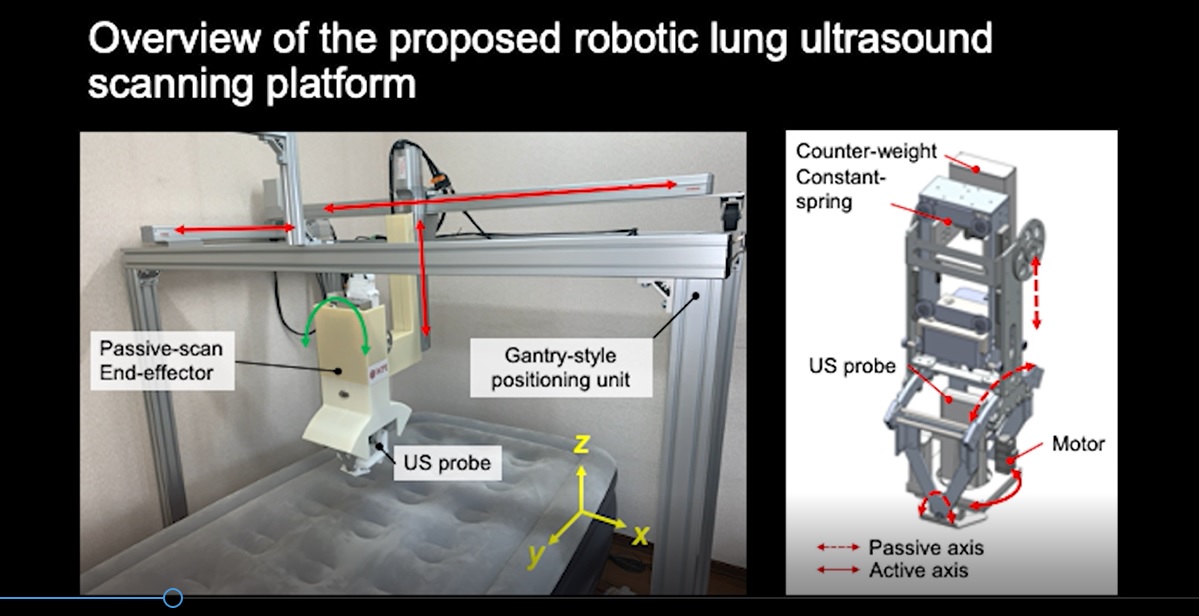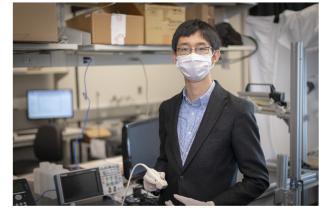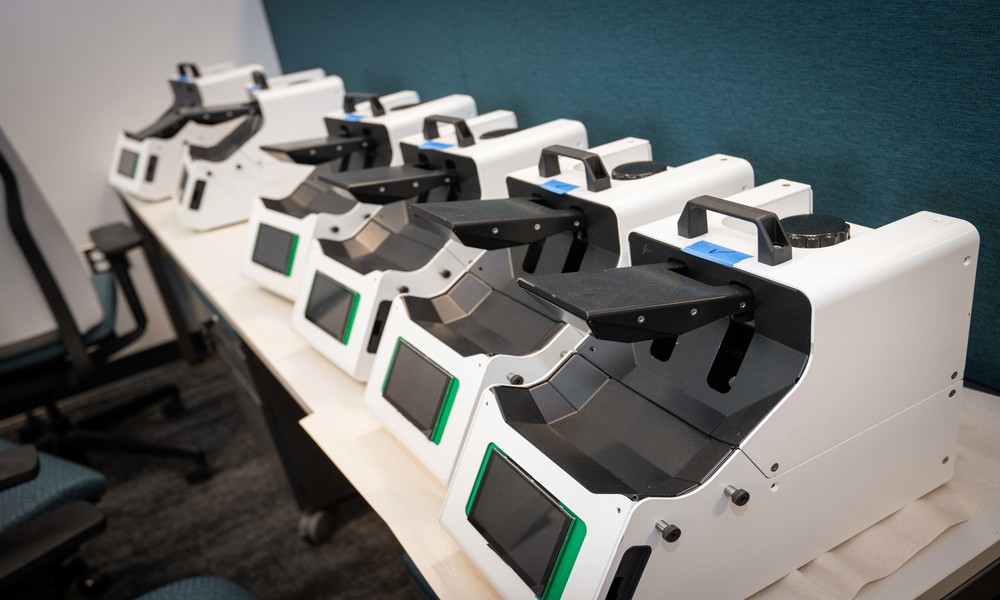Worcester, Mass.—November 11, 2020—As the COVID-19 pandemic continues around the world, the National Institutes of Health (NIH) is fast tracking research on a critical diagnostic tool being developed by a Worcester Polytechnic Institute (WPI) professor. Haichong Zhang, assistant professor in robotics engineering and biomedical engineering, has received a $300,000 grant to build a robotic ultrasound machine to detect disease symptoms in the lungs, a significant development that will allow healthcare providers to minimize their exposure to the virus when conducting assessments of COVID-19 patients.
Respiratory illness remains the primary manifestation of COVID-19 and requires repeat scans to allow healthcare providers to monitor the patient’s lung function. The remote platform is being developed by WPI’s Zhang and an international team of researchers, and it virtually eliminates physical contact between patients and healthcare workers during scans—minimizing the risk of spread, while still allowing for collection of vital data. It also provides a lower cost option for healthcare facilities, compared with X-ray and CT scan machines.
The grant is part of the NIH Common Fund, which is described as a program to “address emerging scientific opportunities and pressing challenges in biomedical research that no single NIH Institute or Center can address on its own, but are of high priority for the NIH as a whole.” The Common Fund received $30 million from the Coronavirus Aid, Relief, and Economic Security (CARES) Act, 2020 to support new research to prevent or respond to the virus in all parts of the world.
“As researchers, we are committed to using our expertise in developing low-cost, safe and effective solutions by introducing new capabilities in healthcare,” said Zhang. “I feel incredibly fortunate to be part of a team with highly motivated and productive collaborators to push this effort together.”

“By working together with our international partners and with support from the NIH, we are able to spur innovative design solutions that can help mitigate the spread of this global pandemic and develop technologies that will be needed in the long-term health of a community,” said Winston Soboyejo, WPI Senior Vice President and Provost.
Zhang’s team of researchers includes Yihao Zheng, assistant professor of mechanical engineering at WPI—as well as collaborators from Beth Israel Deaconess Medical Center/Harvard Medical School, African University of Science and Technology, Massachusetts College of Pharmacy and Health Sciences University, and Yamaha Motor Co. Ltd. Their prototype is a gantry-based robot platform that allows the user to tele-operatively manipulate the ultrasound probe across all chest regions to spot signs of respiratory infections in COVID-19 positive patients. (See robotic platform in use here)
Zhang and WPI-affiliated postdoctoral fellow Ryosuke Tsumara conceptualized the design of the system, which was fabricated in Japan, where Tsumara is currently based due to COVID-19 travel restrictions. The team has conducted rigorous safety and quality tests of the system and is sending the robot to the National Hospital Abuja, in Nigeria, where doctors and researchers will evaluate its suitability in a hospital setting.
In the coming months, Zhang’s team will build a second robotic lung ultrasound system at WPI. Researchers will perform additional evaluations on the updated prototype and study new features to make the robotic system more useful and reliable. These studies will facilitate the translation toward clinical trials on COVID-19 patients.




